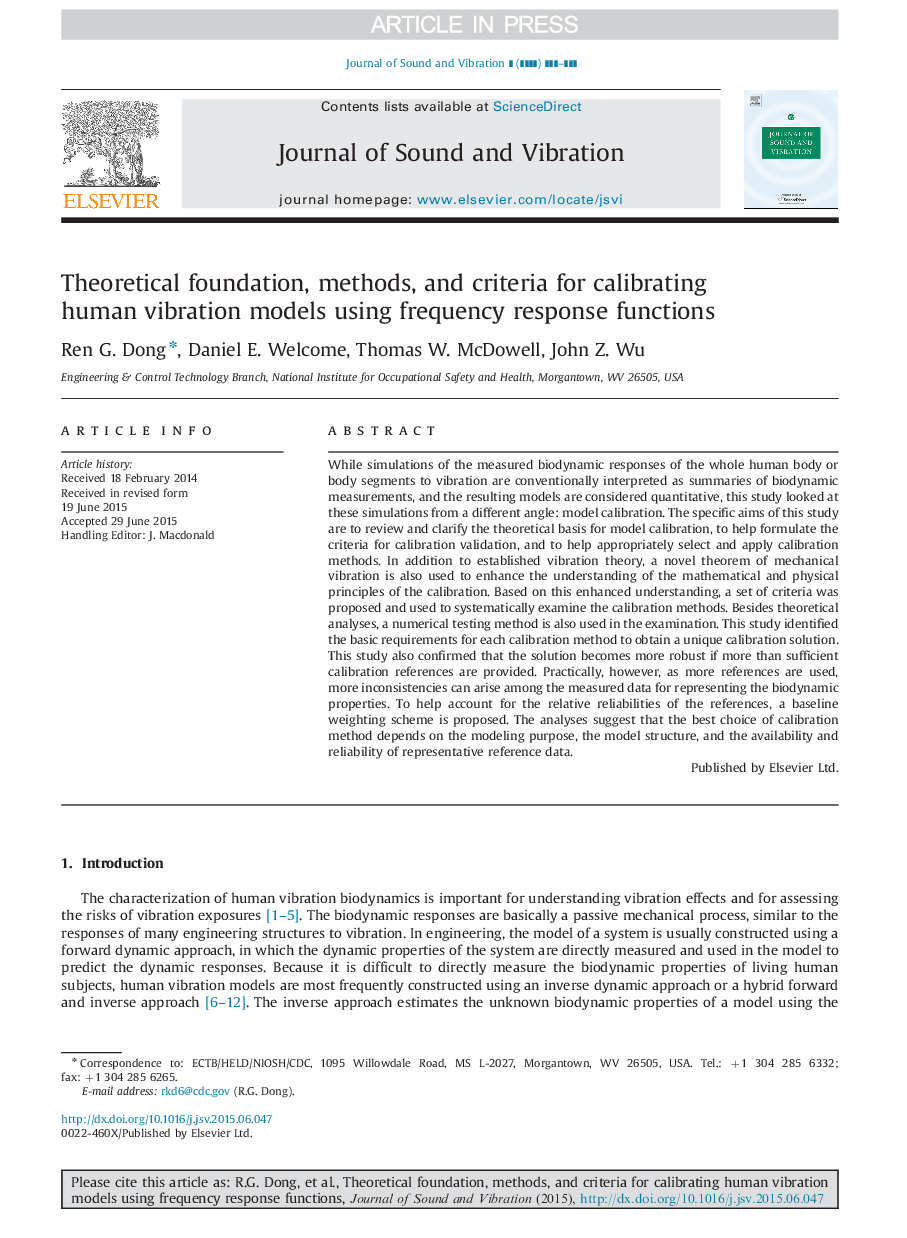| Article ID | Journal | Published Year | Pages | File Type |
|---|---|---|---|---|
| 6755321 | Journal of Sound and Vibration | 2015 | 22 Pages |
Abstract
While simulations of the measured biodynamic responses of the whole human body or body segments to vibration are conventionally interpreted as summaries of biodynamic measurements, and the resulting models are considered quantitative, this study looked at these simulations from a different angle: model calibration. The specific aims of this study are to review and clarify the theoretical basis for model calibration, to help formulate the criteria for calibration validation, and to help appropriately select and apply calibration methods. In addition to established vibration theory, a novel theorem of mechanical vibration is also used to enhance the understanding of the mathematical and physical principles of the calibration. Based on this enhanced understanding, a set of criteria was proposed and used to systematically examine the calibration methods. Besides theoretical analyses, a numerical testing method is also used in the examination. This study identified the basic requirements for each calibration method to obtain a unique calibration solution. This study also confirmed that the solution becomes more robust if more than sufficient calibration references are provided. Practically, however, as more references are used, more inconsistencies can arise among the measured data for representing the biodynamic properties. To help account for the relative reliabilities of the references, a baseline weighting scheme is proposed. The analyses suggest that the best choice of calibration method depends on the modeling purpose, the model structure, and the availability and reliability of representative reference data.
Related Topics
Physical Sciences and Engineering
Engineering
Civil and Structural Engineering
Authors
Ren G. Dong, Daniel E. Welcome, Thomas W. McDowell, John Z. Wu,
